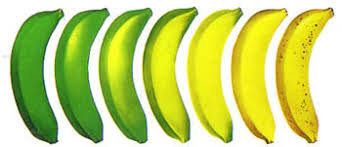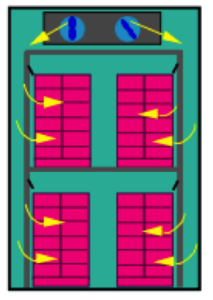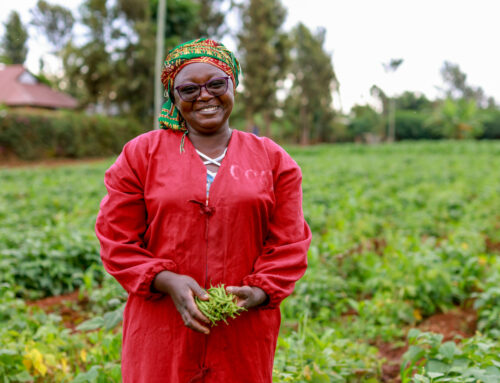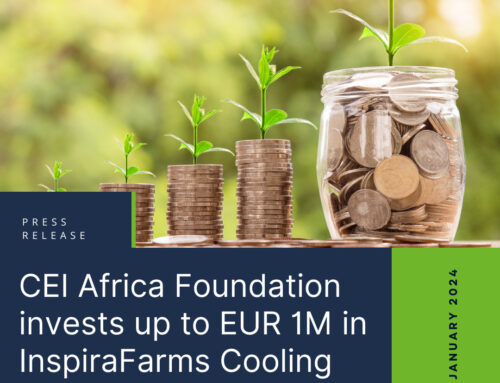Controlled ripening: a key tool for reducing post-harvest losses and accessing high margin markets
More than a half of the food produced globally never reaches consumers, and it is estimated that fruits and vegetables account for 45-50% of food that is lost or wasted. A significant part of that occurs through discarding along the supply chain to meet quality and esthetic standards set by retailers and consumers. Unsold fruits and vegetables account for a big part of wasted food in grocery stores.
Building sustainable food production systems will require increased efficiencies from the farm to the fork level, and in particular, solutions that can extend the shelf life of fresh produce safely and cost-effectively. Fruits and vegetables are metabolically active and undergo ripening and senescence changes. These processes, however, can be controlled in order to preserve their quality and prolong shelf life. Postharvest technologies, such as controlled ripening and temperature management, are examples of tools that can reduce fruit & vegetables postharvest losses by preserving freshness and quality standards. This, in turn, increases the quality, consistency and (most importantly) taste of produce for the end customer.
What is ripening?
Ripening is the process by which fruits attain their desirable flavor, quality, color, palatable nature, as well as other textural properties. Ripening is associated with changes in the biological composition of fruit, i.e. the conversion of starches to sugars. On the basis of their ripening behavior, fruits are classified as either climacteric and non-climacteric fruits.
Climacteric fruits: are defined as fruits that enter a ‘climacteric phase’ after harvest; put simply, they continue to ripen after being harvested. Climacteric fruits include Mangos, Bananas, Papayas, Tomatoes, Guavas, Kiwis, Figs, Apples, Passion fruits, Apricots, Plums, and Pears. During the ripening process, such fruits emit ethylene and also undergo an increased rate of respiration. When climacteric fruits are ripe, they become soft and delicate, and generally cannot withstand the rigors of transport and repeated handling. These fruits are harvested hard and green, but fully mature; agribusinesses and other actors along the value chain adjust the ripening processes to the time required to reach consumers.
Non-climacteric fruits are those that, once harvested, do not ripen further. Non-climacteric fruits produce very small amounts of ethylene and do not respond to ethylene treatment. Non-climacteric fruits include Oranges, Mousambis, Kinnows, Grapefruits, Grapes, Pomegranates, Litchis, Watermelons, Cherries, Raspberries, Blackberries, and Strawberries.
Methods for ripening of fruits
In fruit trading and distribution, ripening is controlled artificially so as to enable fruits to endure the transport and logistics processes required to reach markets. Controlled ripening is designed to prevent high rates of losses and guarantee produce meets retailers’ standards. There are traditional and modern methods, ones using chemicals or natural components, such as Ethylene gas, which is naturally produced in most plant tissues for starting off the natural ripening process, and now is used commercially for controlled – artificial ripening of climacteric fruits. Uniform ripening is the easiest and most rapid method for ripening fruit.
- Although several simple solutions for ripening fruits exist, such as mixing climacteric and non-climacteric fruits inside airtight boxes, most of these solutions only work at a small scale, such as the household. They are not viable, however, for larger supply chains.
- When done under controlled atmosphere, temperature, and relative humidity conditions, ethylene is the safest and most accepted method worldwide for ripening. A naturally occurring gas, ethylene merely stimulates natural ripening until the fruit itself starts producing ethylene in larger quantities. Ehylene is the plants’ ripening hormone, and it regulates its biochemical processes. It is a de-greening agent that can turn the peel of bananas, for example, from green to a perfect yellow; and it give the fruit the signal to convert starch into sugar giving the sweetness and aroma of the fruit.
- When ripening with ethylene, fruit is placed into ripening chambers and brought to the optimum ripening temperature and relative humidity level. Then, a prescribed concentration of ethylene gas is injected into the room. Forced-air cooling systems ensure that the fruits are uniformly exposed to the incoming ethylene concentration. When fruits are exposed to ethylene under these controlled conditions, they will initiate their respiratory climacteric pattern, and ripen at a relatively uniform rate. Conditions and duration can be varied to suit customer specifications for stage of ripening and colour development. In these systems, once ethylene levels go above a certain concentration, the air is refreshed to avoid accelerating the ripening process and the ensuing sub-optimal results.
Ripening Facilities
Starting the natural ripening process is required facilities that allow controlling fruit temperature, room humidity, carbon dioxide concentration and adding ethylene gas.
- Room design: placement of crates must allow sufficient space for air-flow and temperature management, increasing overall thermal and electric efficiency.
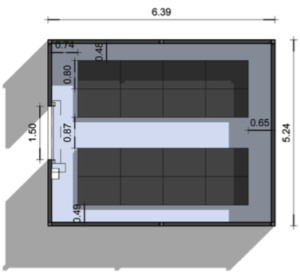
- Insulation: Roofs and walls should be of high-density for high insulation. Cold room doors of 1500 x 2500 mm can provide optimal air-tightness.
- Temperature: the facility must be able to guarantee a constant temperature in a range from 2-18Cº. Each commodity has specific temperatures requirements.
- Cooling & airflow: A forced-air cooling system can provide adequate air circulation within the room. This is important for ensuring a uniform distribution of ethylene, as well as to avoid the accumulation of carbon dioxide (produced by the fruit’s respiration). Adequate circulation can be accomplished by periodic air exchange. Additionally, some fruits—such as avocados and pears—need to be cooled after ripening.

